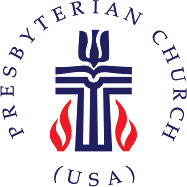(I'm playing two games with this post as it's also appearing in Adam Walker Cleaveland's Plurality 2.0 series. Check that out. The post was also intended for this seminary reflections column, so enjoy it here too. Oh, and by the way I'm a senior M.Div. student at Columbia Seminary in Decatur, Georgia.)
Seminary Reflections:
Plurality 2.0 is as Matt Diaz describes his baseball swing. No, really. Last week, Atlanta Journal-Constitution reporter Carroll Rogers interviewed the Atlanta Braves outfielder and asked, “So how would you describe that swing of yours?”
Diaz replied, “It’s something that works for me, but I never teach it to anybody. I used to give hitting lessons when I was in the minor leagues and they’d be like, ‘Well, I see you do this,’ and I’d be like, ‘No. No. No.’ ....it’s helped me understand that not everybody hits one way.”
Diaz gets Plurality 2.0 because he understands there is not one way to hit well, one perfect swing that all must emulate.
Jump back to the religion classroom and consider American Religious History. In the 19th century, different seminaries used to have very particular theologies. If you went to Yale, you were taught one thing by one like-minded group of professors. If you went to Harvard you got the “Harvard School” of thought. If you went to Union Seminary in the early to mid twentieth century you had to choose a camp: Niebuhurian or Tillichian. Theological education used to be pretty darn segregated. You got taught one swing, the one and only one that was right for you and everyone in the entire world.
Not anymore. Not as I’ve experienced at Columbia Theological Seminary, at least. Take the example of preaching. I was taught preaching by three different professors, all of whom are phenomenal preachers. But I didn’t actually hear any one of those professors preach until after I had taken my preaching courses. Preaching professors here go out of their way not to make homiletical “mini-mes”, not to have students imitate their styles. And so students learn about the variety of preaching out there, and we try out a variety of styles and preparation and possibilities ourselves to see what works for us. At graduation, then, we’re not preachers like our professors, but preachers in our own right. We’ve got a lot more to learn, and we’ll do that on our terms and incorporate the new stuff into our styles -- the individual persons God made us to be. Preaching pedagogy 2.0 is Plurality 2.0 as well.
So this Plurality 2.0 comes with great challenges: no two swings are alike, no two theologies are identical, no two preachers could preach the same sermon let alone in the same style.
Some see Plurality 2.0 as political correctness gone amuck -- every man, woman, and child for one’s self. And, sure, there’s a part of me that gets a little anxious when I think about it. What if all our sources and norms go out the window? What will we cling to? What if we become so diverse we lose any unity whatsoever?
But then I see Matt Diaz swing for the fences. And a new theological concept rocks my world. And a preacher hits one out of the park. And I think about the exciting time in which we live and I ask myself, “What will my hit be?”
Thursday, April 09, 2009
Subscribe to:
Post Comments (Atom)








No comments:
Post a Comment